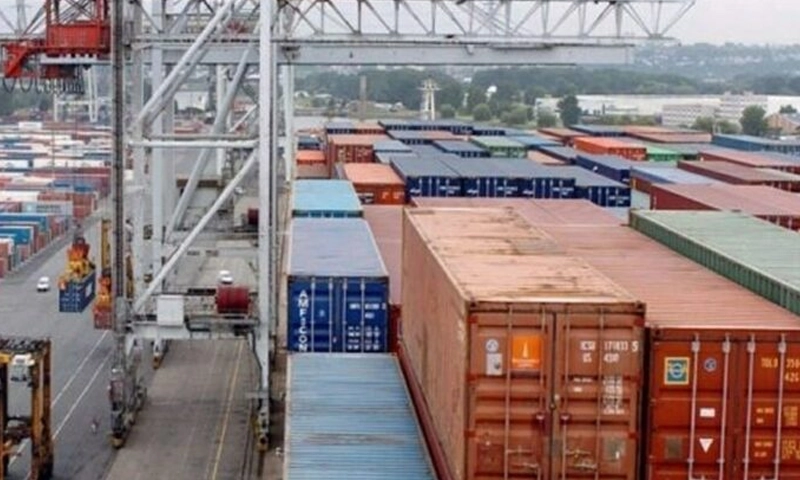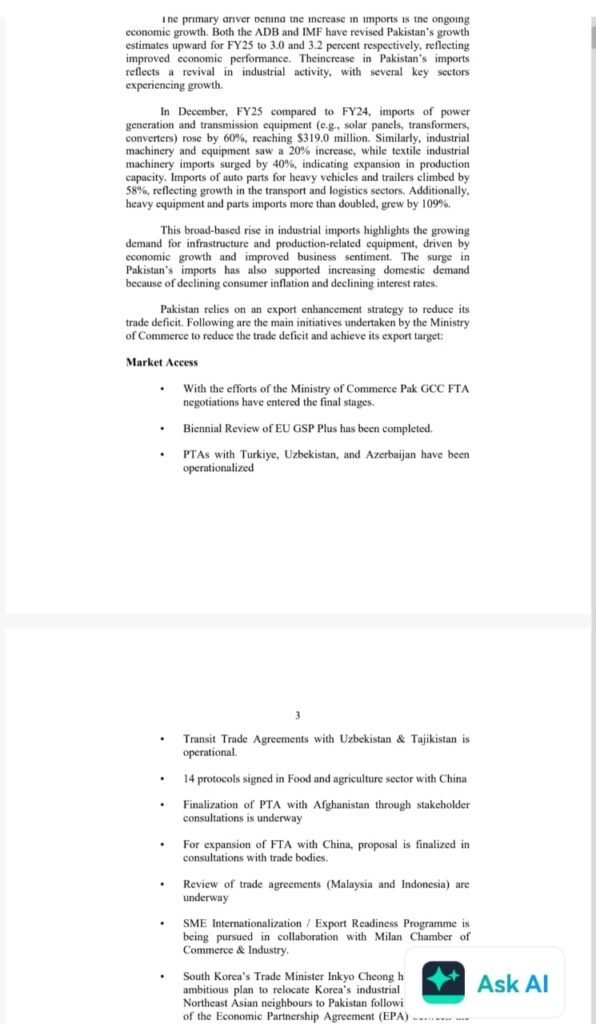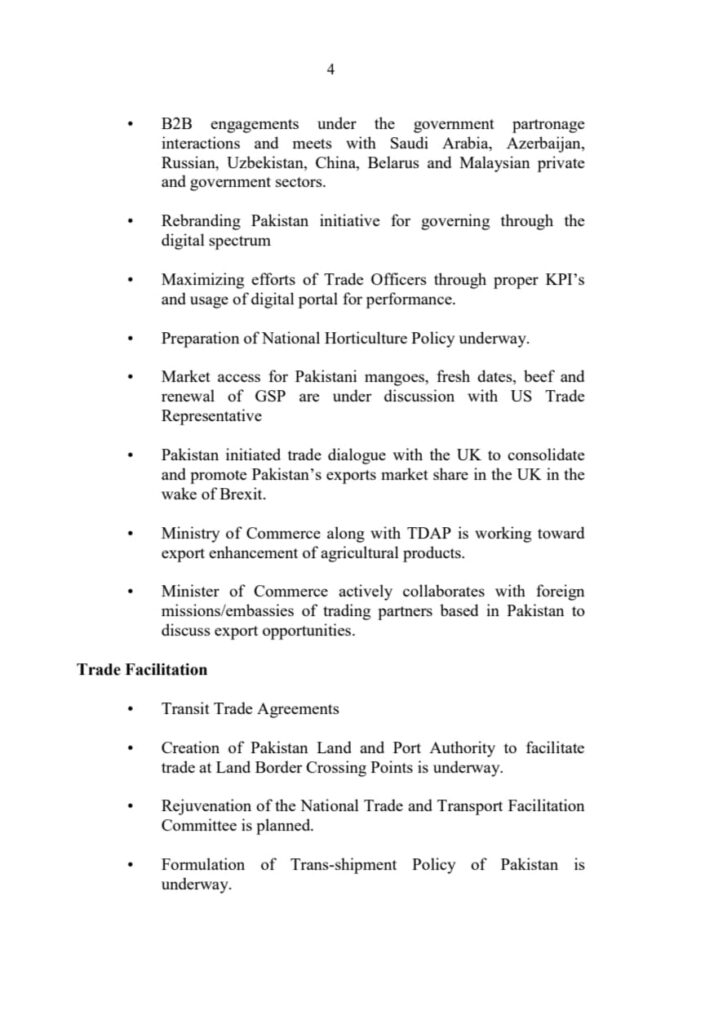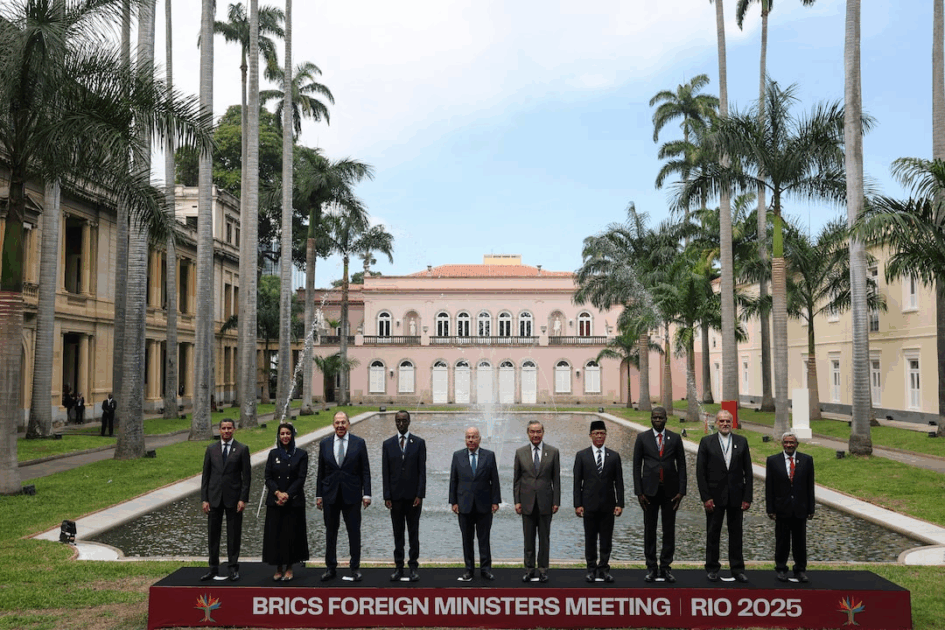- Web Desk
- 4 Minutes ago

Pakistan’s trade deficit surges past Rs43,000 billion in five years
-

- Web Desk
- 4 Hours ago

ISLAMABAD: Pakistan has been grappling with a persistent trade deficit over the past five years, which has alarmingly surged to over Rs43,000 billion during this period.
According to documents available with HUM News English, the country’s total trade deficit from 2020 to the first two quarters of fiscal year 2024–25 stood at $154.32 billion, equivalent to Rs43,398 billion.
The documents reveal that, apart from a few quarters showing minor dips, the trade deficit consistently trended upward throughout the period.
In a marginal improvement, the trade gap narrowed in FY24 compared to the previous fiscal year, decreasing from $27.47 billion in FY23 to $24.11 billion in FY24, as exports slightly outpaced imports.

However, the deficit increased slightly to $10.4 billion in the first two quarters of FY25 (July–December), up from $10.3 billion during the same period the previous year. Imports exceeded $5 billion in December 2024, reaching $5.2 billion, which pushed the monthly trade deficit to $2.35 billion.
A five-year breakdown shows that Pakistan exported goods worth $30.6 billion in FY24 while importing $54.78 billion—resulting in a shortfall of $24.1 billion. In FY23, the country’s exports stood at $27.7 billion against imports of $55.2 billion, yielding a gap of $27.47 billion.

Similarly, the trade deficit was $48.35 billion in FY22 and $31.08 billion in FY21. Combined exports for those two years amounted to $67.1 billion, while imports stood at $136.5 billion. In 2020, the deficit was $23.16 billion, with imports at $44.6 billion and exports at $21.4 billion.
Imports of power generation and transmission equipment increased by 60 per cent till December 2024 compared to the previous fiscal year, reaching $319 million. Imports of industrial machinery and equipment rose by 20 per cent, while textile machinery imports surged by 40 per cent. Auto parts for heavy vehicles and trailers jumped by 58 per cent.

Pakistan’s main exports include textiles, garments, rice, leather goods, sports goods, and surgical instruments. Key imports comprise machinery, petroleum products, chemicals, electronics, and food items.
Pakistan primarily trades with the United States, China, the United Kingdom, Germany, the United Arab Emirates, the Netherlands, Afghanistan, Spain, Italy, Bangladesh, France, Saudi Arabia, Belgium, Indonesia, Japan, Qatar, Kuwait, Malaysia, South Korea, Thailand, and Russia.
A few days ago, a high-level Pakistani delegation led by Finance Minister Muhammad Aurangzeb visited the United States to address the trade imbalance between the two countries. The visit comes as Islamabad explores options ranging from importing crude oil from the US to removing tariffs on American imports to offset a deficit that has prompted higher tariffs from Washington.
Finance Minister Aurangzeb stated that Pakistan is considering buying more cotton and soybeans from the US and is in discussions to remove non-tariff barriers that hinder access to American products.
“We can also look into whether there are any issues with respect to non-tariff discussions — such as onerous inspections on our end for US products — which we can obviously review,” he said.
Pakistan requests extra 10b yuan on China swap line: Aurangzeb




